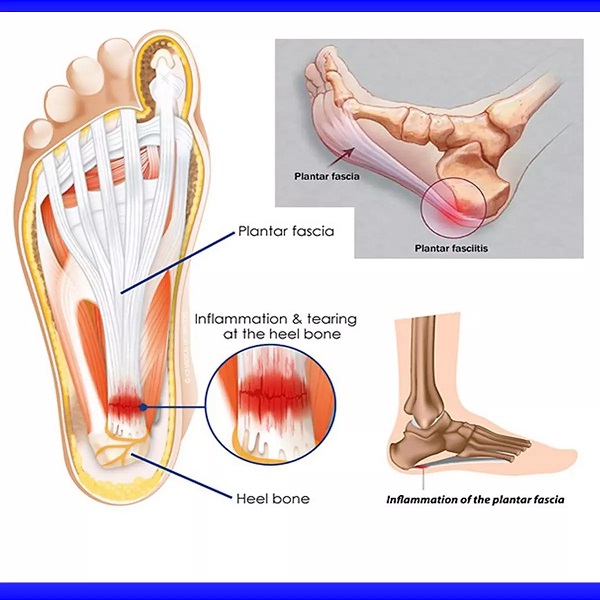Custom Orthotics Use and Treatment
Orthotics can be helpful in addressing a wide range of medical conditions that affect the feet, ankles, legs, and spine. Here are some common conditions that orthotics can be used to treat or manage:
Plantar fasciitis: A condition that causes pain in the heel and bottom of the foot, typically due to inflammation of the plantar fascia (a thick band of tissue that runs along the bottom of the foot).
Flat feet: A condition in which the arches of the feet are lower than normal, which can cause pain, fatigue, and instability.
Bunions: A bony bump that forms at the base of the big toe, which can cause pain, inflammation, and difficulty wearing shoes.
Arthritis: A chronic condition that causes joint pain and inflammation, which can affect the feet, ankles, and other parts of the body.
Back pain: Orthotics can be used to help improve posture and alignment, which can help to alleviate lower back pain.
Sports injuries: Orthotics can be used to help prevent or manage injuries related to athletic activities, such as ankle sprains or stress fractures.
Diabetes: People with diabetes are at risk of developing foot ulcers and other complications due to poor circulation and nerve damage, and orthotics can be used to provide additional support and reduce pressure on the feet.
Cerebral palsy: Orthotics can be used to provide support and improve gait in people with cerebral palsy, a condition that affects muscle tone and movement.
Stroke: Orthotics can be used to help people regain mobility and function after a stroke, by providing additional support and improving gait and balance.
Overall, orthotics can be a helpful tool in managing a wide range of medical conditions, by providing support, improving alignment, and reducing pressure on affected areas of the body. It’s important to work with a healthcare professional to determine the best type of orthotic for your specific needs and condition.
Back Pain
orthotics can be used to help alleviate back pain. Orthotics are specialized devices that can be custom-made or off-the-shelf, designed to support and align the feet, ankles, and legs, which in turn can help to improve posture, reduce stress on the lower back, and relieve back pain.
Orthotics for back pain can come in a variety of forms, such as insoles, shoe inserts, or braces. They are typically prescribed by a healthcare professional such as a podiatrist, physical therapist, or orthotist, and can be custom-made to fit the unique needs of an individual.
In some cases, orthotics may be used as part of a broader treatment plan for back pain, which may also include exercises, physical therapy, pain medications, or other interventions. It’s important to work with a healthcare professional to determine the best course of treatment for your specific condition and needs.
Overall, orthotics can be a helpful tool in managing back pain, especially if the pain is related to issues with the feet or legs. By providing additional support and correcting alignment, orthotics can help to improve posture and reduce stress on the lower back, leading to reduced pain and improved function.


Plantar fasciitis
Plantar fasciitis is a common condition that causes pain in the heel and bottom of the foot. It is typically caused by inflammation of the plantar fascia, a thick band of tissue that runs along the bottom of the foot and connects the heel bone to the toes. The plantar fascia is responsible for supporting the arch of the foot and absorbing shock when walking or running.
Orthotics can be helpful in treating plantar fasciitis by providing additional support to the arch of the foot and redistributing pressure away from the inflamed area of the plantar fascia. Orthotics for plantar fasciitis can come in a variety of forms, such as insoles, shoe inserts, or braces, and can be custom-made to fit the unique needs of an individual.
In addition to orthotics, other treatments for plantar fasciitis may include stretching exercises, physical therapy, non-steroidal anti-inflammatory drugs (NSAIDs), corticosteroid injections, and in severe cases, surgery. It’s important to work with a healthcare professional to determine the best course of treatment for your specific condition and needs.
If you suspect you have plantar fasciitis, it’s important to seek medical attention to receive an accurate diagnosis and appropriate treatment. Early intervention and management of plantar fasciitis can help to reduce pain, improve function, and prevent the condition from worsening.

Flat Feet
Flat feet, also known as fallen arches, is a condition in which the arches of the feet are lower than normal or nonexistent. This can cause the feet to turn inward, leading to pain, fatigue, and instability. Flat feet can be caused by a variety of factors, including genetics, injury, or certain medical conditions such as rheumatoid arthritis or cerebral palsy.
Orthotics can be helpful in treating flat feet by providing additional support to the arch of the foot and redistributing pressure away from the affected area. Orthotics for flat feet can come in a variety of forms, such as insoles, shoe inserts, or custom-made braces, and can be designed to fit the unique needs of an individual.
In addition to orthotics, other treatments for flat feet may include stretching exercises, physical therapy, supportive footwear, or in severe cases, surgery. It’s important to work with a healthcare professional to determine the best course of treatment for your specific condition and needs.
If you suspect you have flat feet, it’s important to seek medical attention to receive an accurate diagnosis and appropriate treatment. Early intervention and management of flat feet can help to reduce pain, improve function, and prevent the condition from worsening.